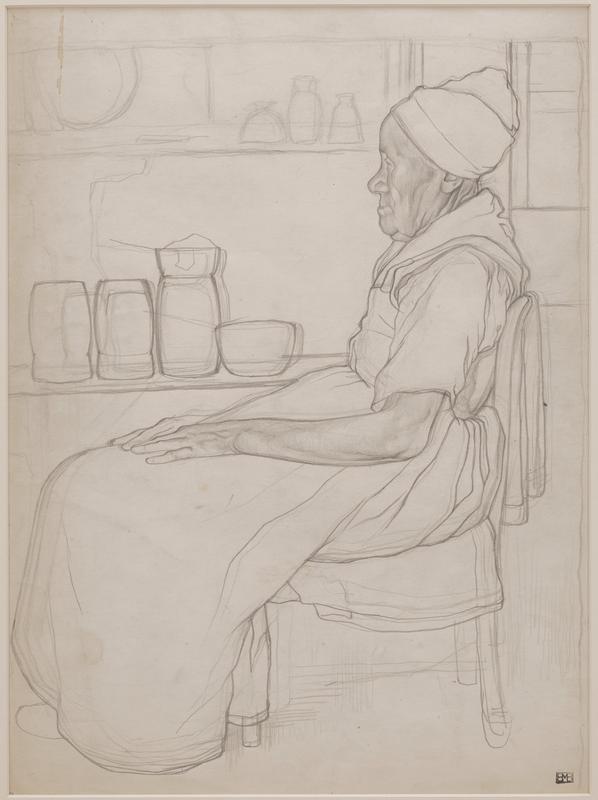
34. Bernard Boutet de Monvel, Study for “La mère Caillot” (also called Seated Old Lady)
| Artist | Bernard Boutet de Monvel, French, Paris 1881–São Miguel Island, Azores, Portugal 1949 |
| Title, Date | Study for “La mère Caillot” (also called Seated Old Lady), c. 1898–1904 |
| Medium | Graphite pencil |
| Dimensions | 17 11/16 × 12 9/16 in. (45 × 32 cm) |
| Inscriptions + Marks | Boutet de Monvel stamp applied at time of Sotheby’s sale, 2016 |
| Provenance | Estate of the artist and by descent; sale, Sotheby’s, Paris, April 6, 2016, no. 219 (with five other sheets); [Ambroise Duchemin, Paris, until 2017; to Weisberg]; Yvonne and Gabriel Weisberg, Minneapolis |
| Exhibition History | "Reflections on Reality: Drawings and Paintings from the Weisberg Collection," Mia, 2022–23 |
| Credit Line | Promised gift of Gabriel P. and Yvonne M.L. Weisberg, Minneapolis |
Bernard Boutet de Monvel’s father was the painter and celebrated children’s book illustrator Louis Maurice Boutet de Monvel (cat. nos. 36–37). At first Bernard worked alongside his father but later gained fame as an international society portraitist. Though the young Boutet de Monvel grew up in Paris, his family spent time in the medieval town of Nemours, about fifty miles south of the city. There he encountered people like this sitter—people adhering to a traditional, rural way of life, a world removed from the crowded boulevards of Paris. At about age seventeen, while still training to become a painter, Boutet de Monvel made a series of drawings, prints, and watercolors depicting citizens of Nemours in their traditional or working garb. He was rigorous in his preparations, preceding a final watercolor with a careful pencil study.
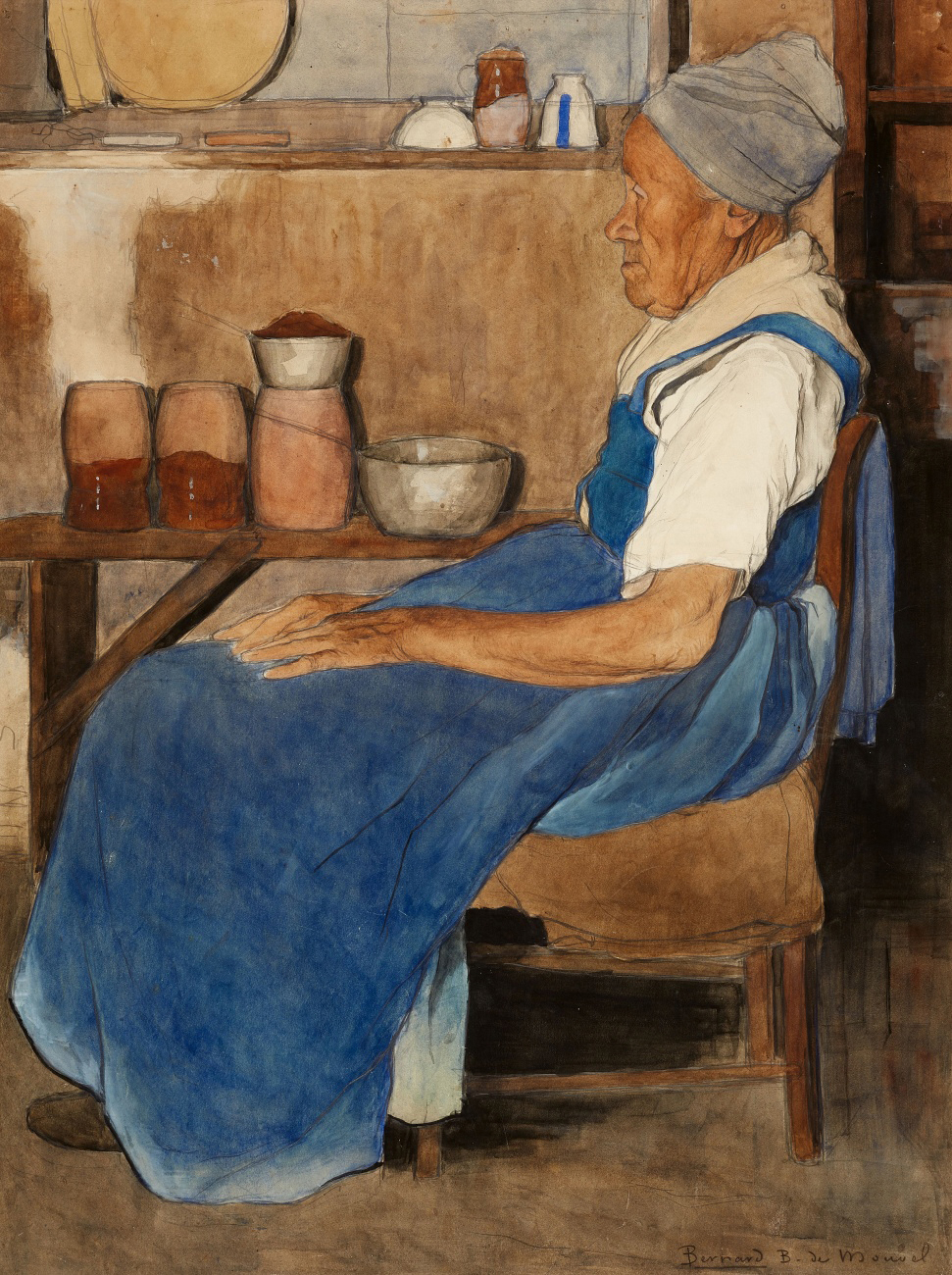
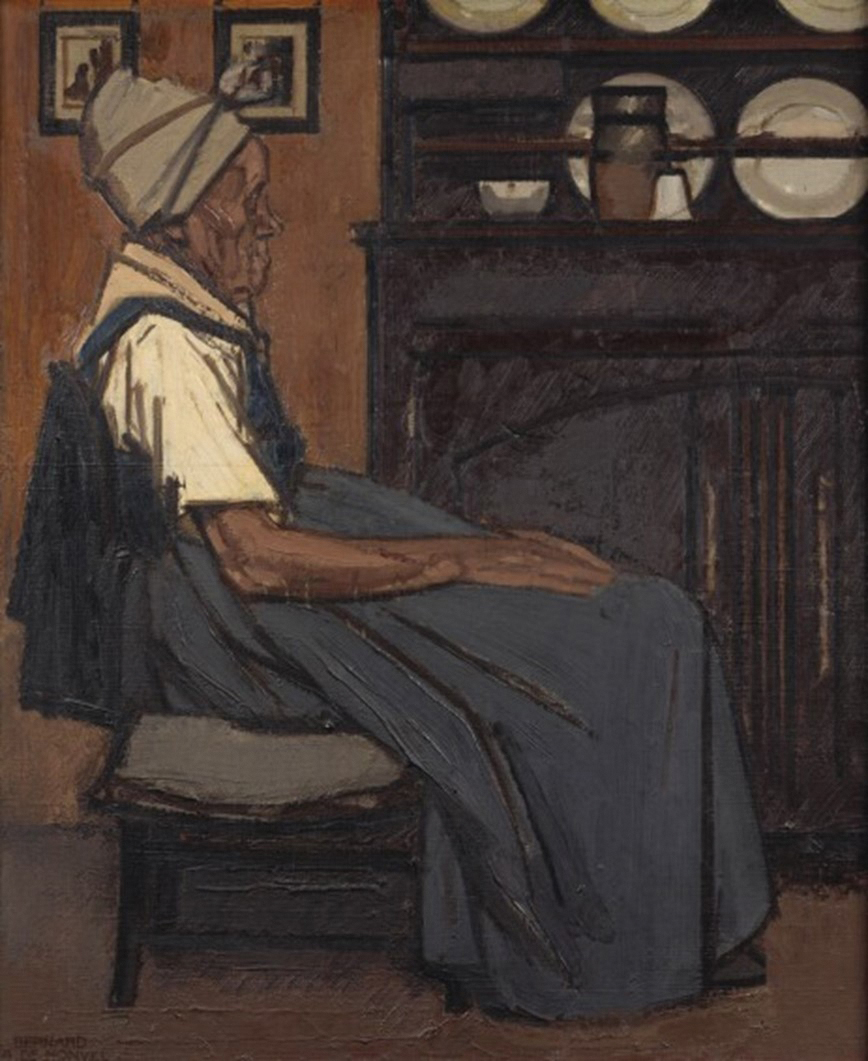
The present sheet is a study for La mère Caillot, a watercolor that surfaced on the art market only recently (fig. 1).1 Both works are closely related to a composition that Boutet de Monvel developed earlier, in 1898, and turned into a drawing, a painting, and an etching (figs. 2–4). Because the painting appears to include pentimenti (vestiges of previous ideas, later erased or concealed), it may have come first, although it may have been preceded by another preparatory drawing.
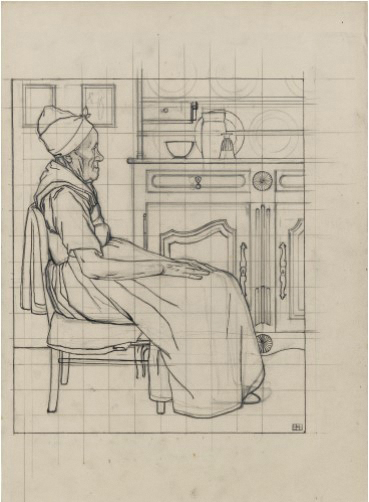
In the oil painting, the woman faces to our right (fig. 2). Boutet de Monvel filled the background with detail: a sideboard with drawers and cabinets, plates, various vessels, and two pictures. The pentimenti are most noticeable along the folds of the sitter’s skirt. We can see the artist finding his way with this version; the execution is labored, the color transitions unconvincing. The dense, opaque colors yielded a muddy picture. Perhaps this is why he never sold it.
Next, he transcribed the painting onto paper (fig. 3). Now all the uncertainty of the painting is gone. There are also new details, such as the pattern on the small, bell-shaped vessel (an inverted glass?) on the sideboard. He then transferred this design to a copper etching plate to make a print (fig. 4). In doing so, he accounted for the mirror imaging that occurs in the printing process. While working on the printing plate, he continued to elaborate the image, adding a pattern to the woman’s kerchief. He completed it with saturated colors.
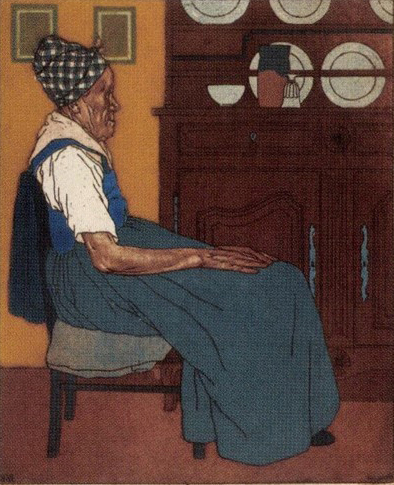
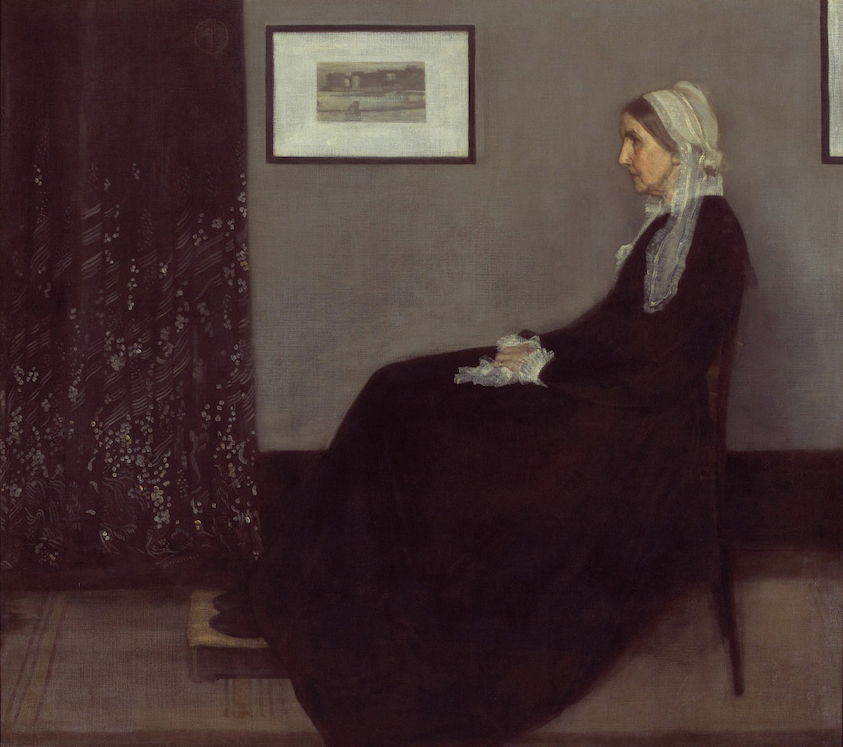
Apart from the color, the painting and etching seem to be indebted to James McNeill Whistler’s famous painting known as “Whistler’s Mother” (fig. 5). The 1871 work was nearly rejected when Whistler submitted it to the British Royal Academy’s 1872 exhibition, and he eventually pawned it. The French government acquired it for the Musée du Luxembourg in 1891, where it soon inspired many variations, especially by American expatriates. One does well to recall that the painting’s given title is Arrangement in Grey and Black No. 1. Young artists, including Boutet de Monvel, were fascinated by the idea that a painting could be thought of as a surface arrangement rather than as a window into fictive space. In this regard, the flatness of Boutet de Monvel’s drawing and etching is especially notable.
Boutet de Monvel rethought his composition yet again when creating the present drawing. He simplified the elements, bringing the design closer to the solemnity of “Whistler’s Mother.” He removed the framed pictures and added a window instead. He also replaced the sideboard with plain shelving. Working with a looser touch than he did in the earlier pencil drawing, he tried different arrangements—as with the large pots. The result places greater emphasis on the sitter and leaves us with a proto-Morandi still-life of humble domestic containers. The woman’s face received extra attention, too. In the earlier painting, drawing, and print, her face resembles a carved mask, hard and faceted. In the Weisberg drawing, Boutet de Monvel softened her features, imparting a sheen to her weathered skin. There may have been yet another drawing between the Weisberg sheet and the watercolor, for the watercolor is considerably larger.
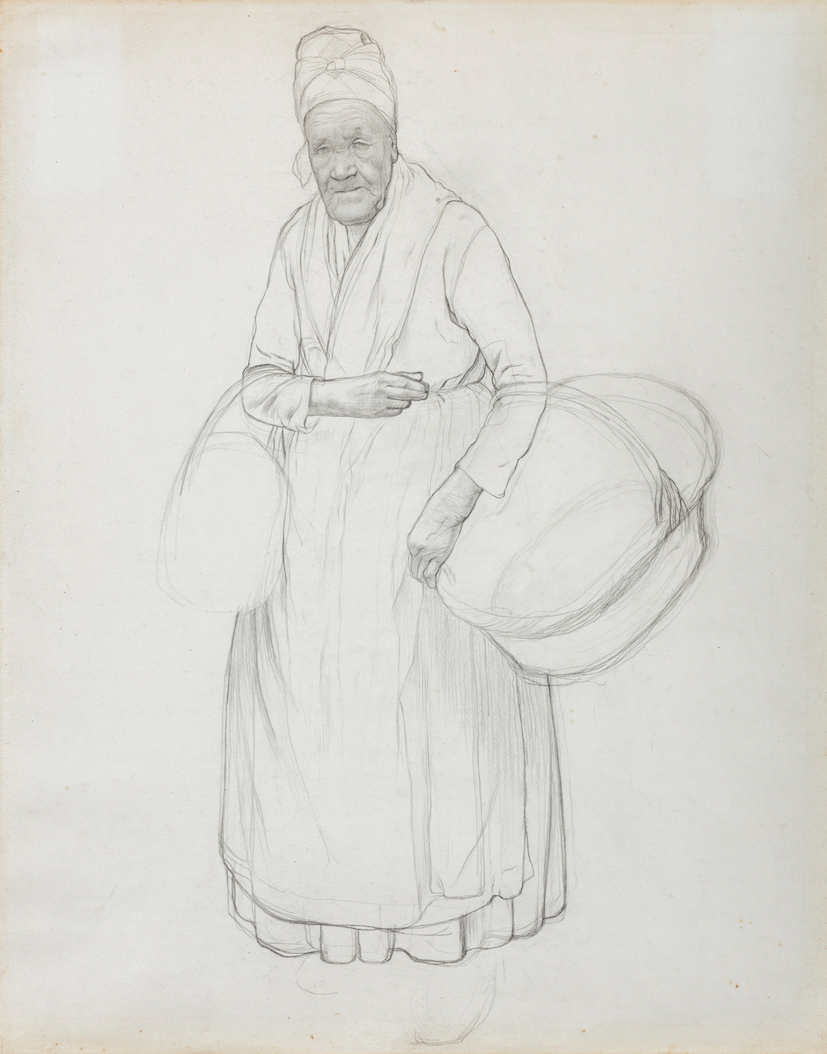
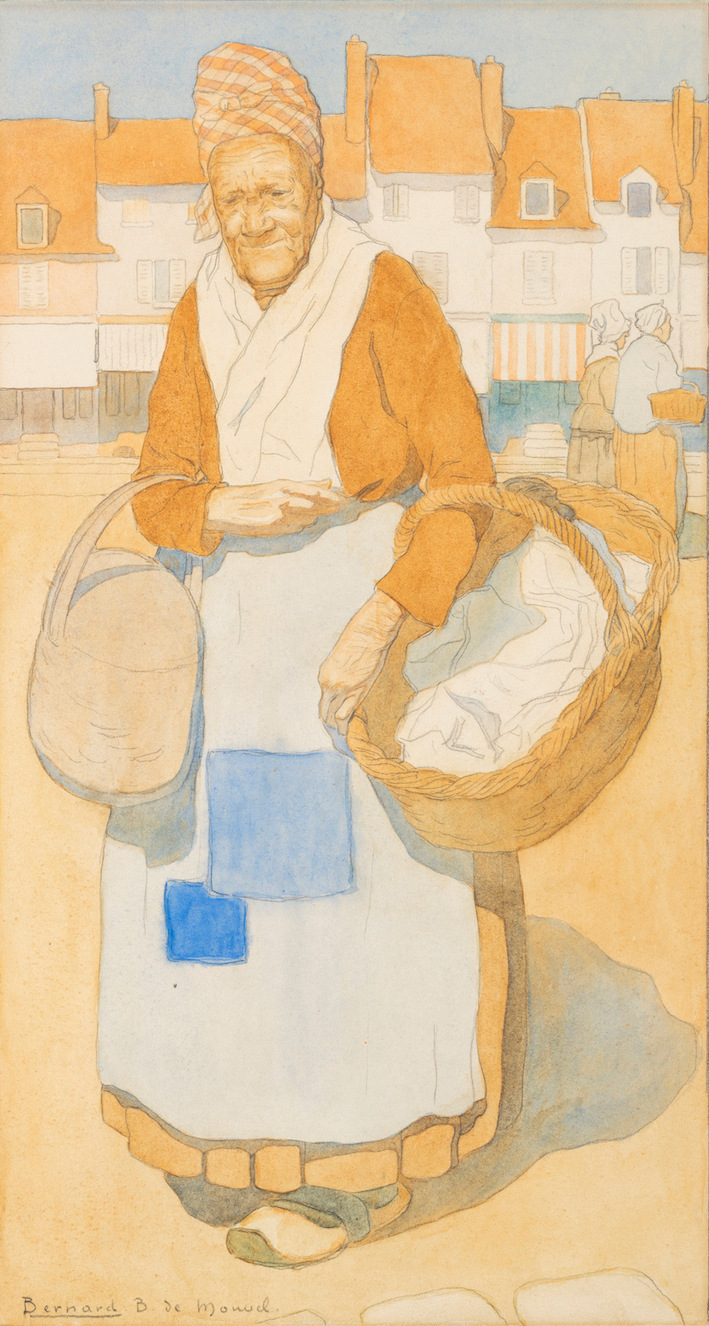
The sitter, Mère Caillot, was the wife or mother of a butcher in Nemours; together they sold meat from a stand in the open-air market. She seems to have been a favorite with Boutet de Monvel. He drew her standing still (cat. no. 35) and walking across the market square (figs. 6–7). Twice in 1904 he painted the Caillot family market stand, at different times of day.2 In the 11 AM composition, Mère Caillot appears at the far right, in a blue dress and white kerchief (fig. 8).
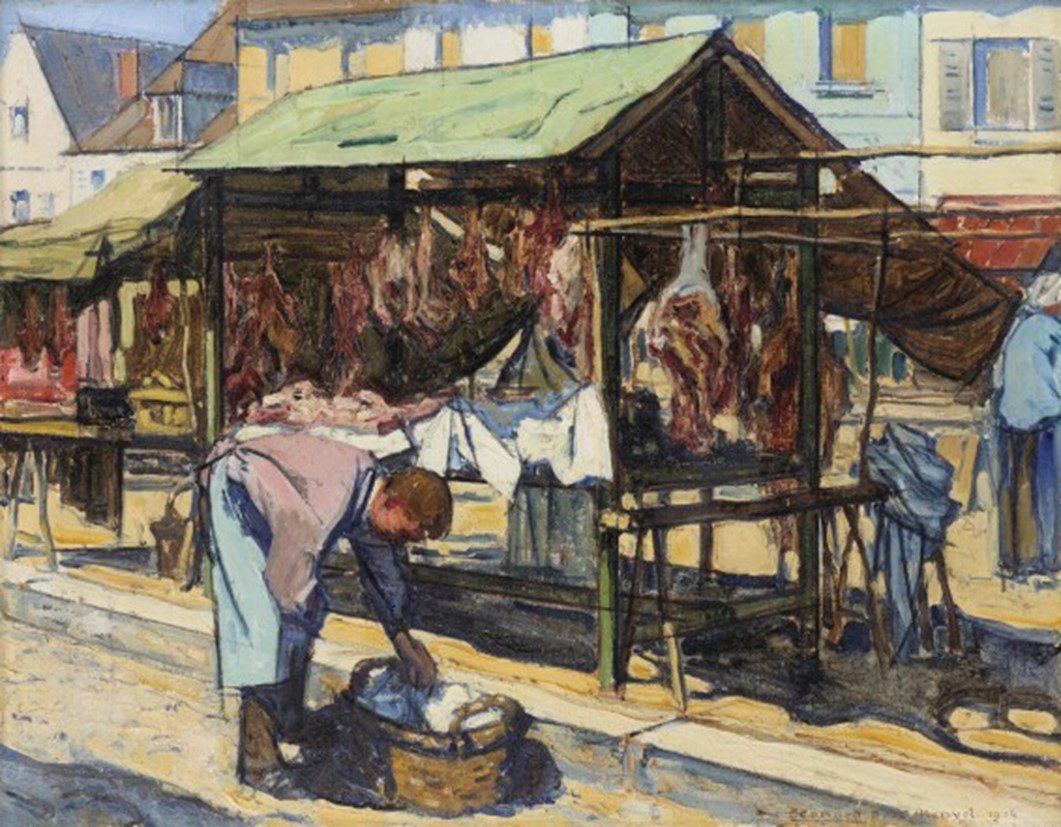
The exact date of the Weisberg drawing is hard to pin down, but it likely came after the composition Boutet de Monvel made in 1898. In any case, the finesse of the Weisberg drawing and the watercolor exceeds that seen in the earlier painting, drawing, and print.
Early in his career, Boutet de Monvel contributed illustrations to magazines, then a reliable way to make money. With the outbreak of World War I, he was called up as a reservist and became a bombardier. He saw considerable action, survived repeated plane crashes, and demonstrated such valor that he was awarded the Legion of Honor. The dashing hero went on to have a cosmopolitan Jazz Age career among the monied and the famous, maintaining houses and studios in Paris and Palm Beach, Florida. Many of his society portraits are characterized by a minutely detailed realism, reflecting the fastidious preparation seen in his earlier Mère Caillot works. His wealth enabled the family to retain a substantial quantity of his art until it was dispersed at a Sotheby’s auction in Paris in 2016. The Weisberg drawing was among those works.
TER